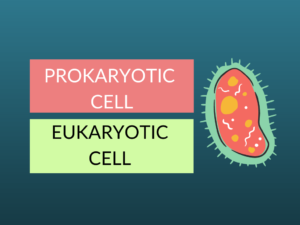The Difference Between Nucleus and Nucleoid
Introduction
The nucleus and nucleoid are central components of a cell, but they have distinct characteristics and functions. Understanding the differences between these two structures is essential for grasping the complexity of cells and their various processes. In this article, we will explore what the nucleus and nucleoid are, provide examples of each, discuss their uses, and ultimately highlight their key differences.
What is the Nucleus?
The nucleus is a membrane-bound organelle that is typically found in eukaryotic cells. It acts as the control center of the cell, containing the genetic material in the form of DNA. The nucleus directs cellular activities by regulating gene expression, DNA replication, and RNA synthesis.
Examples of Nucleus
The nucleus is commonly observed in plant and animal cells. For example, in human cells, the nucleus is present in various tissues such as liver, skin, and muscle. Similarly, in plant cells, the nucleus can be found in leaves, stems, and roots.
Uses of Nucleus
The nucleus serves several crucial functions within a cell:
- Stores DNA and genetic information
- Regulates gene expression and controls cellular activities
- Involved in DNA replication, repair, and recombination
- Responsible for the production of RNA molecules
What is the Nucleoid?
The nucleoid is a region within prokaryotic cells where the genetic material is located. Unlike the nucleus, it is not surrounded by a membrane and is not considered an organelle. In prokaryotic cells, such as bacteria, the nucleoid contains a single circular DNA molecule along with various proteins that help maintain DNA structure and function.
Examples of Nucleoid
Bacteria, such as Escherichia coli (E. coli), have a well-defined nucleoid region. Other prokaryotes, such as archaea, also possess a nucleoid that houses their genetic material.
Uses of Nucleoid
The nucleoid has several essential roles within prokaryotic cells:
- Stores genetic information in the form of a single, circular DNA molecule
- Controls the cell’s activities and metabolic processes
- Facilitates the replication and segregation of DNA during cell division
- Allows for efficient gene expression and regulation
Differences Between Nucleus and Nucleoid
| Difference Area | Nucleus | Nucleoid |
|---|---|---|
| Cell Type | Eukaryotic cells | Prokaryotic cells |
| Membrane | Surrounded by a membrane | Not surrounded by a membrane |
| Location | Typically located in the center of the cell | Located towards one end of the cell |
| DNA Structure | Contains linear DNA molecules | Contains a single circular DNA molecule |
| Protein Binding | Contains nucleosomes made of DNA and histone proteins | Contains proteins that help maintain DNA structure |
| Cellular Organization | Organized and compartmentalized structure | Less organized and lacks compartmentalization |
| Cellular Complexity | Indicates higher cellular complexity | Indicates lower cellular complexity |
| Gene Regulation | Involved in complex gene regulation processes | Simpler gene regulation mechanisms |
| Number per Cell | Typically one per cell | One in most prokaryotes, but exceptions exist |
| Presence of Organelles | Can coexist with various organelles | Lacks organelles apart from ribosomes |
Conclusion
In summary, the nucleus and nucleoid play distinct roles in different types of cells. The nucleus is present in eukaryotic cells and is enclosed by a membrane, serving as the control center for gene expression and other cellular processes. On the other hand, the nucleoid is found in prokaryotic cells, lacks a membrane, and contains genetic material along with associated proteins. Understanding these differences enhances our understanding of cellular complexity and organization.
People Also Ask
1. What are the major differences between nucleus and nucleoid?
The major differences between nucleus and nucleoid include cell type, presence of a membrane, DNA structure, and cellular organization.
2. Which cells have a nucleus?
Eukaryotic cells, such as those found in plants and animals, have a nucleus.
3. Can nucleoid contain multiple DNA molecules?
While most prokaryotes have a single DNA molecule in their nucleoid, exceptions exist, wherein multiple DNA molecules are observed.
4. Is nucleoid present in eukaryotic cells?
No, nucleoid is only found in prokaryotic cells, not in eukaryotes.
5. What other structures are found within the nucleus?
In addition to DNA, the nucleus also contains the nucleolus, which is involved in the production of ribosomes, as well as various proteins and RNA molecules.


